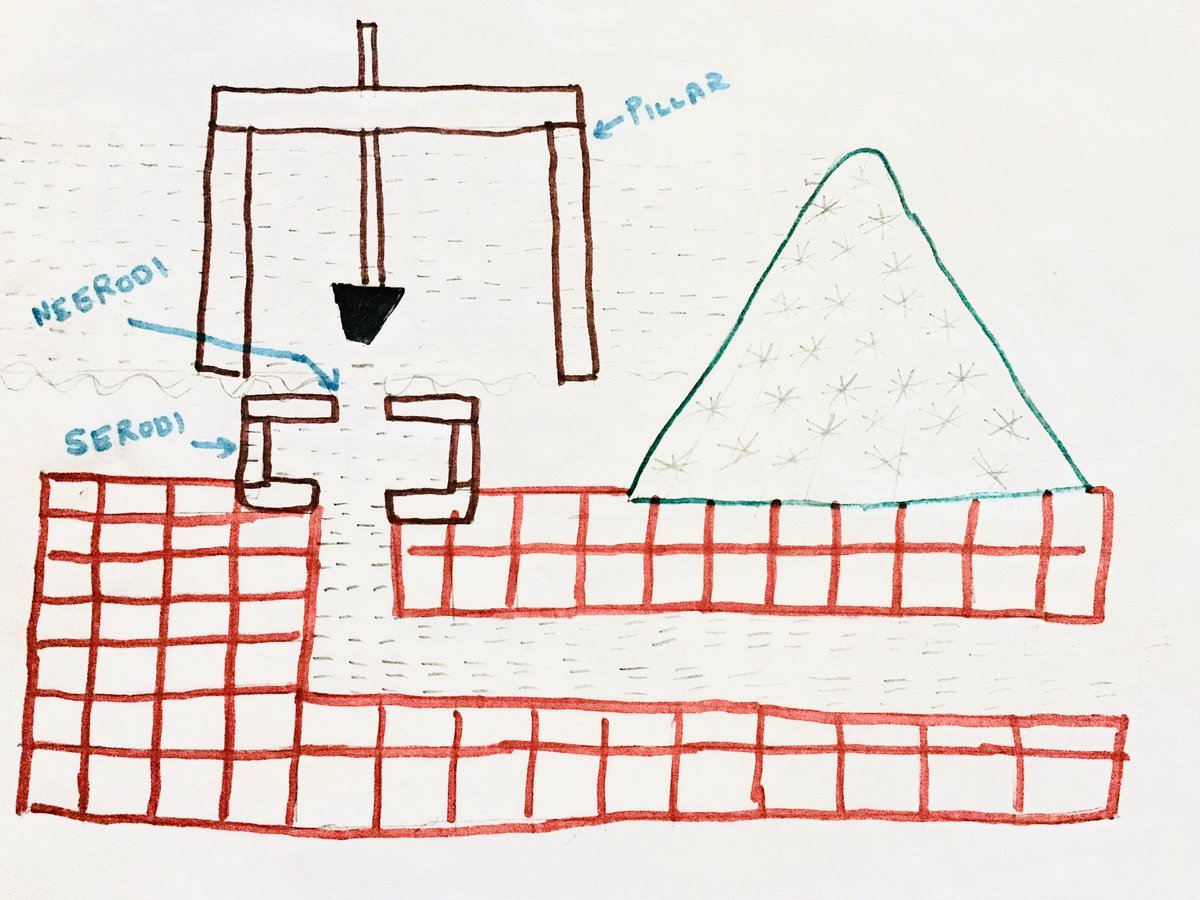
Close on the heels of Adi Perukku, let’s look at a mechanism used in olden days to irrigate the farm lands, especially in Chola desam. ‘Kumizhi Thumbu’ was predominately used in lakes / reservoirs where the water is stored for irrigation purposes. The structure has two pillars 

The pillars are connected by two horizontal bars with a hole on the centre. There is a stone box beneath the water level which has a round passage to the pipeline underneath that. This is called ‘Neerodi’. On the side of the box, there are few small holes called as ‘Serodi’ 

The Neerodi can be closed / opened by a ‘Kuzhavi Kal’ connected to an iron rod which passes through the horizontal bars.This will remain in closed position during storage time. When water needs to be opened for irrigation, the ‘Kuzhavi’ is lifted & water passes to the outlet pipe
Due to the water pressure, the water along with mud also passes through Serodi. This ensures that the excess mud passes away reducing the need for desilting the lake. The dimensions of each ‘Kumizhi Thumbu’ is designed according to the irrigation area they cater to.
This avoids excess water being sent out. That the Chola kings attached major importance to irrigation can be understood by naming of one Kumizhi Thumbu as ‘Rajarajan Kumizhi Thumbu’ in Sembiyanmadevi lake near Ariyalur. But with Morden technique we have brought that to this state 

Pic courtesy : Vikatan & drawing by my daughter!
• • •
Missing some Tweet in this thread? You can try to
force a refresh














